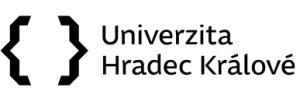This course will focus on several themes connected to the changes developing in Central European states prior and after their entry to the European Union in 2004 and 2007, respectively. Firstly, the course will deal with comparative assessment of differences and similarities of the post-1989 political, social, and economic transition. In the next part of the course, we will focus on both regional (Visegrad 4, CEFTA) integration and the preparation for entry in the EU. Long term attempts by the Central European countries to join the EU had significant impact upon the politics, economy, state administration and other afflicted areas. The integration of Central European states in EU structures not only provided more venues for mutual cooperation and dialogue, but also showed some points of divergence, which should be tackled if Central European cooperation is going to intensify in the future. Special part of the course will be devoted to the entry of CE states to NATO by the end of 1990s. We will deal with different roles played by Central European states within NATO and we will try to answer the question how does NATO membership affected regional security cooperation. Because of strategic position of Central Europe on the continent, in the end of the course we analyse the impact of integration processes.
- Učitel: Stanislav Myšička
